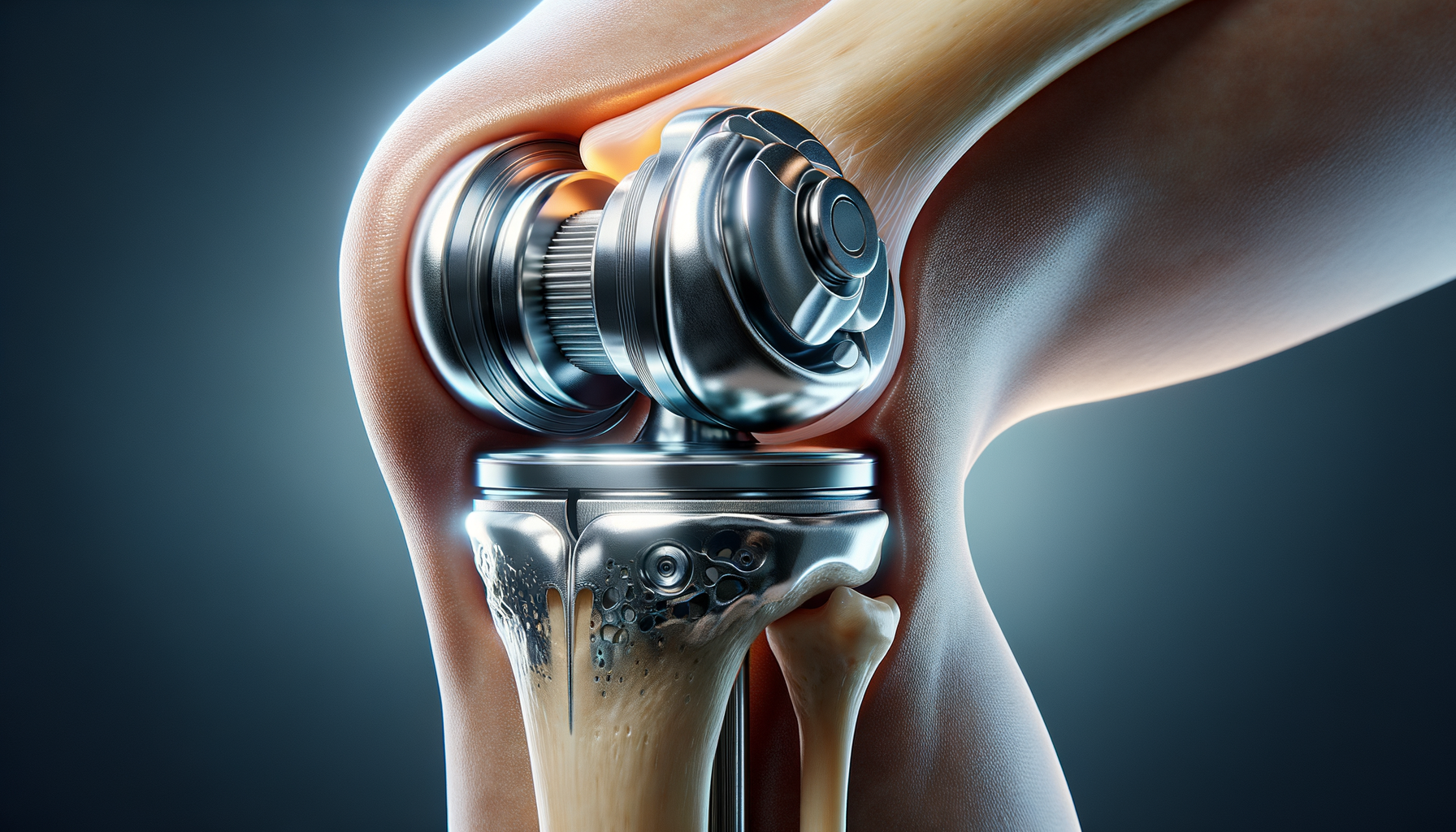Understanding Knee Replacement Surgery
Knee replacement surgery, also known as knee arthroplasty, is a medical procedure designed to replace the weight-bearing surfaces of the knee joint to relieve pain and disability. It is most commonly performed for osteoarthritis, and also for other knee diseases such as rheumatoid arthritis and psoriatic arthritis. Patients who undergo knee replacement surgery often experience significant pain relief and improved mobility, allowing them to return to their daily activities with greater ease.
The surgery involves removing damaged or diseased parts of the knee joint and replacing them with artificial components. These components are typically made of metal alloys, high-grade plastics, and polymers. The goal is to mimic the natural movement of the knee joint as closely as possible. There are different types of knee replacement surgeries, including total knee replacement, partial knee replacement, and complex knee replacement, each tailored to the specific needs of the patient.
Before undergoing knee replacement surgery, patients typically go through a series of evaluations, including imaging tests like X-rays or MRIs, to assess the condition of the knee joint. This helps the medical team determine the most appropriate surgical approach and the type of prosthetic components to be used. Understanding the procedure and its potential outcomes is crucial for patients to set realistic expectations and prepare for the recovery process.
Who Needs Knee Replacement Surgery?
Determining the need for knee replacement surgery involves a comprehensive evaluation of the patient’s symptoms and overall health. Generally, candidates for knee replacement are those who suffer from severe knee pain or stiffness that limits everyday activities such as walking, climbing stairs, or even sitting and standing. The pain may be persistent, even during rest, and could be accompanied by chronic inflammation and swelling that does not improve with medication or physical therapy.
Several factors contribute to the decision to undergo knee replacement surgery. These include:
- Severe arthritis: Osteoarthritis, rheumatoid arthritis, and post-traumatic arthritis are common causes of knee joint damage.
- Previous injuries: Past injuries or surgeries that have affected the knee joint’s integrity.
- Age and activity level: While age alone is not a determining factor, the patient’s activity level and overall health are considered.
- Failure of other treatments: When non-surgical treatments such as medications, injections, or physical therapy have not provided adequate relief.
Ultimately, the decision to proceed with surgery is made collaboratively between the patient and their healthcare provider, considering the patient’s quality of life and the potential benefits and risks of the procedure.
The Procedure: What to Expect
Knee replacement surgery typically takes one to two hours to complete and is performed under general or spinal anesthesia. The procedure begins with an incision over the knee to expose the joint. The surgeon then removes the damaged cartilage and bone, and carefully places the new artificial joint components to ensure proper alignment and function.
There are several key steps involved in the procedure:
- Preparation of the bone: The damaged surfaces of the femur and tibia are removed and shaped to fit the prosthetic components.
- Implantation of the components: Metal implants are positioned on the ends of the femur and tibia, and a plastic spacer is inserted between them to allow for smooth movement.
- Closure: The incision is closed with stitches or staples, and the knee is bandaged to protect the surgical site.
Advancements in surgical techniques and technology have improved the precision and outcomes of knee replacement surgeries. Minimally invasive approaches, such as robotic-assisted surgery, are becoming more common, offering benefits like reduced recovery time and less post-operative pain.
Recovery and Rehabilitation
Recovery from knee replacement surgery varies from patient to patient, but most individuals can expect to spend a few days in the hospital following the procedure. During this time, pain management is a priority, and physical therapy typically begins shortly after surgery to encourage movement and prevent stiffness.
The rehabilitation process is crucial for a successful recovery and involves:
- Physical therapy: To restore strength and mobility in the knee, patients participate in a structured physical therapy program.
- Home exercises: Patients are encouraged to perform exercises at home to continue improving their range of motion and strength.
- Regular follow-up appointments: Monitoring progress and addressing any concerns with the healthcare provider.
Most patients can resume normal activities within six to twelve weeks, although full recovery may take several months. Adhering to the rehabilitation plan and following medical advice are essential for achieving the best possible outcomes.
Potential Risks and Complications
Like any major surgery, knee replacement carries potential risks and complications. While the surgery is generally safe and effective, patients should be aware of the possible issues that can arise, including:
- Infection: Though rare, infections can occur at the surgical site or around the prosthetic joint.
- Blood clots: Deep vein thrombosis (DVT) can develop in the legs, posing a risk of pulmonary embolism if a clot travels to the lungs.
- Implant issues: Over time, the prosthetic components may wear out or become loose, necessitating revision surgery.
- Nerve or blood vessel damage: Although uncommon, there is a risk of injury to surrounding nerves or blood vessels during surgery.
Patients can minimize these risks by choosing an experienced surgical team, adhering to pre- and post-operative instructions, and promptly addressing any concerns with their healthcare provider. Understanding the potential complications allows patients to make informed decisions and take proactive steps in their care.
Conclusion: Embracing a New Chapter
Knee replacement surgery offers a new lease on life for those struggling with debilitating knee pain and mobility issues. By understanding the procedure, potential risks, and the recovery process, patients can approach surgery with confidence and realistic expectations. While the journey to recovery requires dedication and patience, the rewards of improved quality of life and renewed independence make it a worthwhile endeavor. For those considering knee replacement, consulting with a healthcare provider is the first step towards embracing a new chapter of mobility and comfort.








